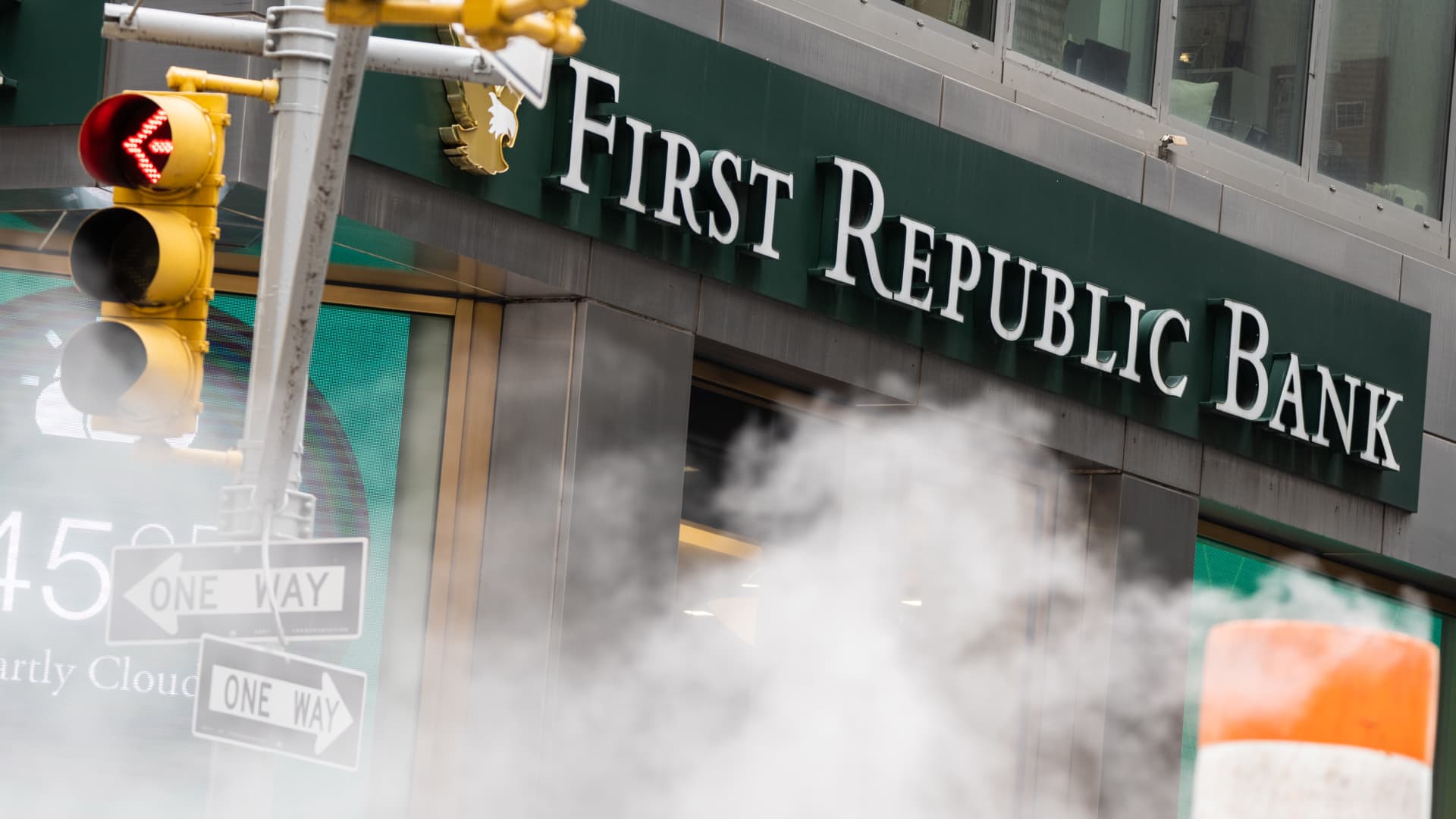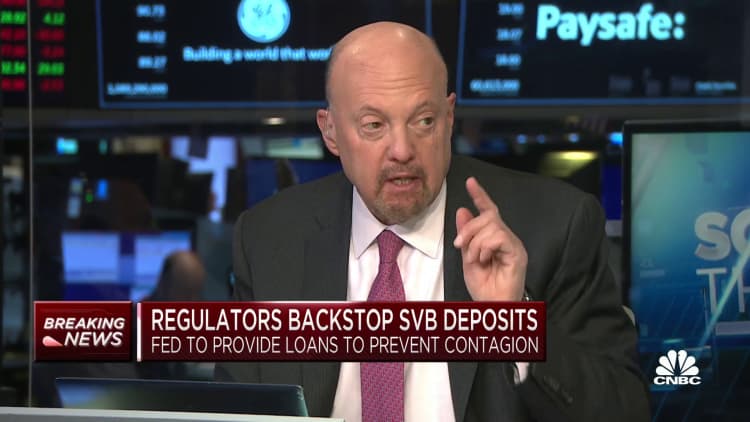First Republic drops 70%, leads decline in bank stocks despite government's backstop of SVB
First Republic Bank led a decline in bank shares Monday that came even after regulators' extraordinary actions Sunday evening.


Financial stocks under pressure
The declines came despite Sunday's news that the Federal Reserve created a new Bank Term Funding Program that will offer loans for up to a year to banks in return for high-quality collateral like Treasurys. The central bank also eased conditions at its discount window.
A First Republic Bank branch in New York, US, on Friday, March 10, 2023.
Jeenah Moon | Bloomberg | Getty Images
First Republic said Sunday it had received additional liquidity from the Federal Reserve and JPMorgan Chase. The bank said the move raises its unused liquidity to $70 billion, before any funding it could get from the new Fed facility.
First Republic Bank, 1-day
"First Republic's capital and liquidity positions are very strong, and its capital remains well above the regulatory threshold for well-capitalized banks," said founder Jim Herbert and CEO Mike Roffler in a statement.
The SPDR S&P Regional Banking ETF lost more than 7% in premarket trading Monday following a 16% decline last week.
SPDR S&P Regional Banking ETF, 1-day
The slide for regional bank stocks on Monday comes after a rush of withdrawals from SVB Financial forced that bank to close. A key issue was SVB's high percentage of uninsured deposits, as the majority of the bank's customers were not guaranteed to get their money back before the regulatory moves over the weekend.
While SVB had an unusually high percentage of uninsured deposits, there are other midsized banks that could be at risk of large withdrawals.
"We believe regionals with less diversified and large uninsured deposit bases are at risk of deposit flight but not at the speed of SVB and they should have time to tap wholesale funding markets (such as FHLB) and raise cash levels. In a fragile environment like we are in, we believe banks should be cautious about the potential negative signaling effect of raising deposit rates to keep deposits," Citi analyst Keith Horowitz said in a note to clients.
SVB was the largest U.S. bank failure since 2008, with $212 billion in assets. First Republic reported roughly $213 billion in assets as of Dec. 31, according to a securities filing.
While First Republic is not as concentrated in one industry as SVB was with technology, the bank does tend to cater to businesses and wealthy individuals who have large uninsured deposits.
"Unfortunately, one of the first consequences of SIVB's collapse is probably that it will cause a flight of uninsured deposits from smaller, less diverse banks to larger, more diverse ones," Oppenheimer analyst Chris Kotowski said in a note to clients.
Correction: The SPDR S&P Regional Banking ETF fell 16% last week. An earlier version misstated the percentage.

 Tfoso
Tfoso 

































